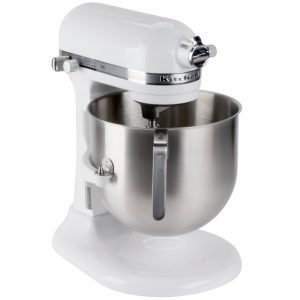The Differences between Hand Mixers and Stand Mixers
Both are made to mix, but the right mixer for you depends on what you need to do and how often you do it. Both can achieve the same results, but choosing the right mixer will make your kitchen tasks easier.
Here is a review of some of the advantages and disadvantages of both types of mixers.
Hand Mixers
There are two main types of hand mixers:
Eggbeaters: These are also known as a rotary beater, which is a handheld device that is powered by manually spinning a crank.
Electric Mixers: This is essentially an electrical version of the eggbeater mixer. The motor is encased in the top of the device and operates the machine at different speeds.
Advantages
- Easy to clean
- Cheaper than stand mixers
- It can be used in different containers
- Convenient for small tasks
Disadvantages
- Lacks the strength of a stand mixer
- More likely to spill or splash when mixing
- Is not optimal for thick batters
Stand Mixers
Stand mixers are a little more heavy duty than a hand mixer. They include a stand that holds a mixing arm and mixing bowl in place. They are designed for handling big mixing tasks or all types.
Advantages
- Fast mixing
- Bowl is held in position at all times
- Unlikely to spill or splash when mixing
- Typically has more features and speed settings
Disadvantages
- Takes more effort to clean properly
- Considerably more expensive than a hand mixer
- Heavier and larger and more difficult to store
If you require any assistance with small appliance repairs or services, please contact All Area Appliance Repair Services today! We are happy to help you with your mixers, blenders, irons, microwaves, or any other small or large home appliances.

Look no further for handheld or stand mixer repair in Denver!


